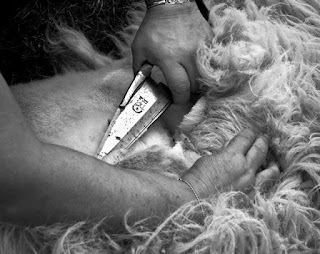 |
| Where Heaven and Earth Touch |
From its very inception, photography has been the poor relation of the art world, never quite on equal footing with painting and sculpture. Alfred Stieglitz fought his entire life to elevate photography's place in the pantheon of creative endeavors...to put it on par with other art mediums. He never totally succeeded.
I believe this tacit disrespect begins with the camera itself, a mechanical device which, some would say, takes the place of the artist's hand. Art work created with a camera is, in their reasoning, less worthy to be considered "fine art". Now, it is the sheer pervasiveness of the medium in mainstream culture that pushes it off the ladder of artistic achievement altogether. Anyone can "snap" a picture at anytime, even with their - gasp! - cell phones! It has become a far too democratic medium to survive in an art world that prides itself on being an artistically elite fraternity, a kind of exclusive country club - the common man (photographer) need not apply!
 |
| The Edge - Marion, Massachusetts |
Ralph Waldo Emerson wrote, "The learned and studious have no monopoly on wisdom." I would say the same applies to painters and sculptures. They don't have exclusive rights to creating thought provoking imagery and "fine art"!
Now, having said all that, I don't mean to imply that all photographs - or all paintings - are the same, artistically speaking. Artistic merit does count but the skill set needed to create an excellent piece of art can be learned. As I use to tell my art students, some artists are born with a gift of artistic vision and technical skill; all the rest of us must learn it patiently and persistently over time.
When all is said and done, the contemplative photographer, while not disregarding the elements of good composition and technical competency, puts a higher premium on the metaphoric dimension of the image. A truly great contemplative photograph is just as difficult to achieve as a great painting or sculpture.
It is wonderful to see major museums recognizing photography's place in the art world today. We've come a long way since Stieglitz's time but the snobbery still exists and as photographers we must continue to advocate for our medium whenever we can.










